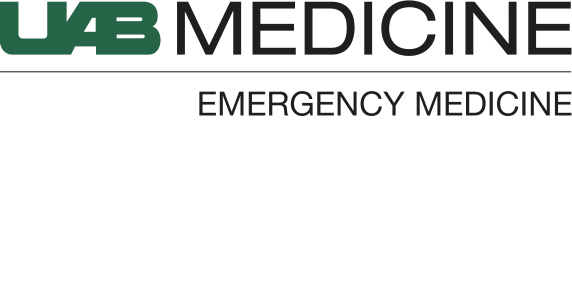INDEX
Pediatric
Table of Contents:
Cross References:
Critically Ill
What do I do if a critically ill child presents to our UAB ED?
Immediately stabilize the patient; then call the Center for Patient Flow to assist with an emergent transfer to Children’s of Alabama through the One Stop Placement hotline at 205-638-7200 or the nearest available bed in the area.
Radiology Limitations
In the event a child requires imaging and you are at a location that does not have imaging available, please proceed to arrange for an emergent transfer to an alternate facility.
Common Presentations
Fever (of 5 or more days with unknown origin)
CXR
CBC
BMP
CRP/ESR
UA/culture
Blood cultures
Viral testing
Fever in neonate (less than 3 months)
All of the above plus…
Blood cultures
LP
Automatic LP for age less than 21
Possible LP for age greater than 21 based on apearance and labs
Antibiotics
Age 0-29 days: ampicillin and gentamycin (add vancomycin for suspected soft tissue infection, extended coverage cephalosporin for suspected meningitis)
Age 29-90 days: ceftriaxone/cefotaxime, ampicillin, vancomycin
Add acyclovir for patients with vesicular rash or concerning findings for HSV (eg history of seizures, positive exposure, or elevated LFTs)
Should be admitted to COA
Viral Respiratory
VRP
Covid/flu
Rapid strep (if sore throat/concerning exam)
Consider CXR
RSV
Supportive care for well appearing patients (no tachypnea, apnea, increased WOB)
Consider transfer to COA for toxic appearing patients or high risk patients (tachypnea/increased WOB, age < 6 months, immunocompromised)
Provide/recommend suctioning and frequent feeds of small amounts
If hypoxic less than 90% of RA, start NC, or HFNC if with increased WOB
Croup
Mild symptoms: supportive care, single dose of oral dexamthesone 0.6 mg/kg (max dose of 16mg/dose. Use IV concentration for PO)
Moderate/severe symptoms:
Retractions, agitation, cyanosis, audible stridor
Oral dexamethasone 0.6 mg/kg
Racemic epinephrine
Observe 2-3 hours after administration of epi
Discharge home if: no stridor at rest, no hypoxia, normal color, normal level of consciousness, tolerating PO
Admit/transfer to COA for: altered level of consciousness, persistent stridor/symptoms despite treatment, toxic appearing, need for supplmental O2, (consider admission if recurrent ED visit within 24 hours, age less than 6 months)
Consider foreign body if no improvement after recommended treatments and obtain airway films
Orthopaedic Injuries
XR of affected long bone/joint
Consider XR imaging of joint above/below injury
Most pediatric orthopaedic injuries can be splinted and followed up with COA fracture clinic (205-638-9146)
Consider CT imaging if normal XR but unable to bear weight in hip/knee
Consider intranasal fentanyl for pain control (1.5mcg/kg, max dose of 50mcg)
Keep NPO if transferring to COA for ortho eval
Abdominal Pain
CBC
BMP
LFTs and lipase
UA/culture
Pregnancy test in females of childbearing age
CRP
Testicular exam in males
Consider urine GC/chlamydia in sexually active patients
Consider IVFs if clinically indicated
Imaging
Consider US imaging for suspected:
Ovarian/testicular torsion
Intussuception
Appendicitis (site specific)
Consider CT imaging for suspected
Acute appendicitis
Blunt or penetrating trauma
Intraabdominal mass
Obstruction
Head injury/concussion
Calculate risk with PECARN
Low risk, observe for 2-4 hours in ED with repeat exam, if stable then DC with return precautions and concussion precautions (avoid contact sports, etc)
High risk, CT imaging
Followup at the COA concussion clinic: https://www.childrensal.org/services/concussion
KEYWORDS: one

